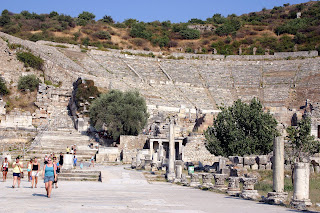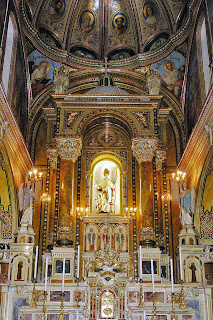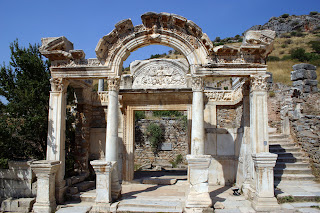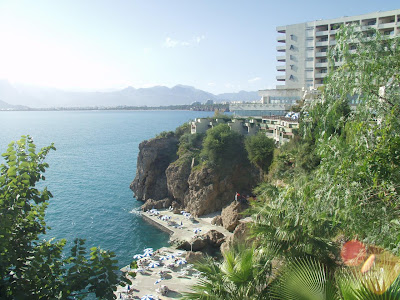
Two-Thirds of the New Testament was either written to or written in Asia Minor, modern day Turkey. Each of Paul’s three missionary journeys started and traveled through Turkey. Apostles like John, Peter, and the disciple Philip ministered there. The Seven Churches of Revelation are there.
 As the church matured, some of the most important councils of Christian history were held there. Turkey is even the home of one of Christianity’s favorite bishops: Nicholas of Myra – Santa Claus!
As the church matured, some of the most important councils of Christian history were held there. Turkey is even the home of one of Christianity’s favorite bishops: Nicholas of Myra – Santa Claus!But Turkey is so much more. Before the time of Jesus, Anatolia was the home of the worship of the goddess Artemis, whose temple was one of the seven wonders of the ancient world. It hosted great kingdom and empires and was the site of the great city of Troy. Even now, Turkey holds more intact Roman era ruins than any other country –even Italy!
 And after Christianity took hold, the Roman empire continued for a thousand years on Turkish soil after Rome was sacked by barbarians. When Turkey was conquered by Islamic Turks, they brought their own rich culture and amazing ability to build monumental wonders to this new land.
And after Christianity took hold, the Roman empire continued for a thousand years on Turkish soil after Rome was sacked by barbarians. When Turkey was conquered by Islamic Turks, they brought their own rich culture and amazing ability to build monumental wonders to this new land.
Today, Turkey is as rich and complex and exotic a culture as exists anywhere in the world. It is a secular, progressive democracy that still embraces their Islamic roots and culture. Yet, it is also the site of new and growing Turkish Christian Church, where new Christians are being led by Turkish believers and are beginning a new chapter for Christians in this ancient land.
In this tour, we will present you with a broad experience of this wonderful country and its rich history:
-You will walk in the steps of the Apostles Paul and John as you visit the places where they traveled and taught.
-You will see some of the marvels of both ancient Anatolia and Islamic Turkey and gain a better understanding of the complex relationship between Christians and Muslims.
-Finally, you will get to meet some Presbyterians who have committed their lives to working in Turkey to better the relationships between Christians and Turks.
In the pages below, we’ll give you a thumbnail sketch of each day our upcoming tour. Be prepared for a journey of a lifetime.
Your in Christ,
Mark Smith and Al Sandalow
Tour Hosts
PS-You will find that you can view a larger version of many of the photos in this blog by simply clicking on the image or by right clicking and opening in a new window/tab.
If you have trouble loading all the pages at once, look to the "Blog Archive" to the right of the first post and click on individual days.














































